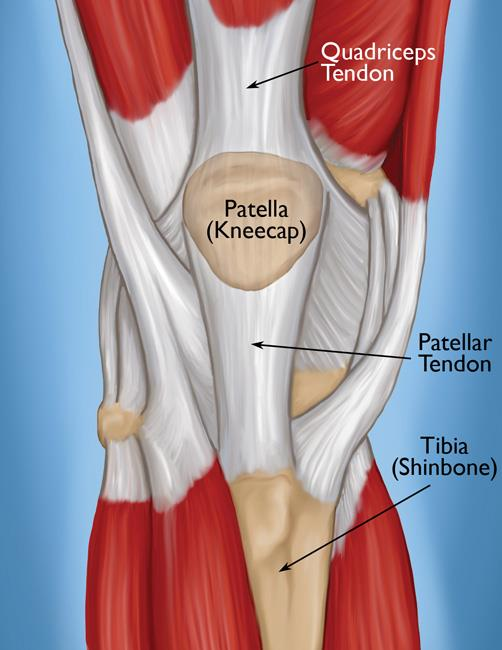4 July 2022 at 19:39:09
Cricket pad splint, request USS, COVID swab
Refer to Ortho on-call
Extensor mechanism disruption can include rupture to the quadriceps tendon or patella tendon. Both could present similarly but can be differentiated clinically. Diagnosis can be made clinically with examination and x-ray. In uncertain cases, ultrasound or MRI (for chronic injuries) can help confirm diagnosis and assess severity of injury (complete vs partial rupture).

A&E management
clinical examination of knee (as described below)
AP and lateral knee XR
provide cricket pad splint, mobilise full weight bearing
offer crutches as required
refer to oncall orthopaedic team to confirm diagnosis
if clinical diagnosis - prepare TCI for repair on trauma list
if diagnosis uncertain - organise urgent outpatient USS (or MRI in chronic ruptures)
Quadriceps tendon rupture
These are more common in patients over the age of 40.
Patient may present with knee pain, swelling and difficulty walking. The mechanism is often from loading on a slightly flexed knee.
Supporting findings include:
gap in the quadriceps tendon (just superior to the patella)
tenderness at the rupture site (superior to patella)
inability to straight leg raise (in complete ruptures)
low lying patella (baja) on lateral knee XR (see information below)

Patella tendon rupture
These are more common in patients under the age of 40.
Patient may present with knee pain, swelling and difficulty walking after a mechanism of sudden quads contraction with knee flexed (e.g. jumping, missing a step). They may describe a "popping" sensation.
Supporting findings include
gap in the patella tendon (just inferior to the patella)
tenderness at the rupture site (inferior to patella)
inability to straight leg raise (in complete ruptures)
high lying patella (alta) on lateral knee XR may (see information below)

Lateral knee x ray (30° flexed lateral knee x-ray)
The position of the patella can help support your clinical findings.
patella Alta (high patella) - may suggest patella tendon rupture
patella Baja (low patella) - may suggest quadriceps tendon rupture

There are several slightly different methods of radiological measurements (below). However, the knee x rays should be done in 30° flexion to determine these values.
